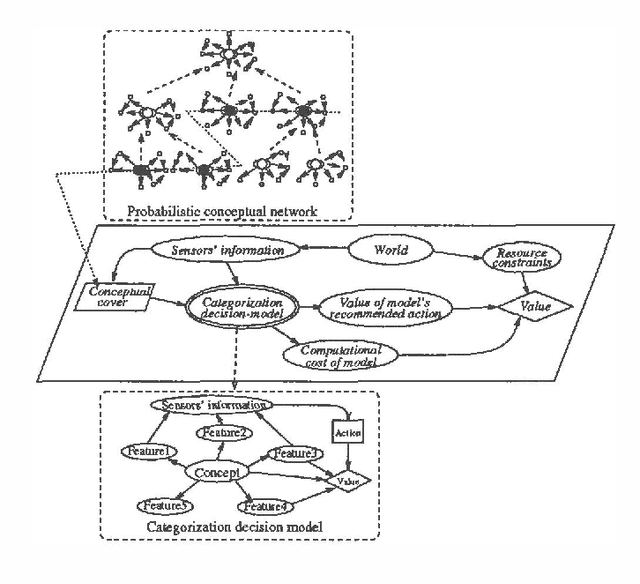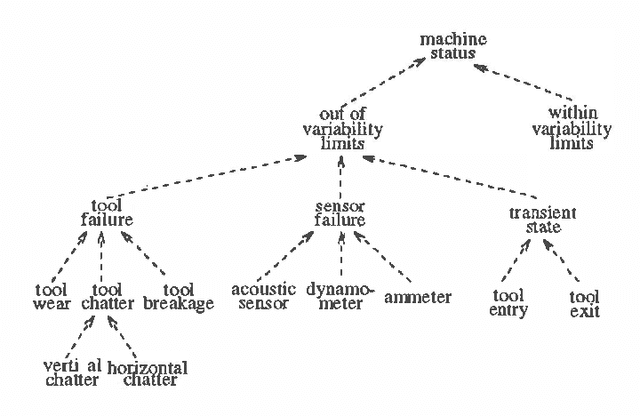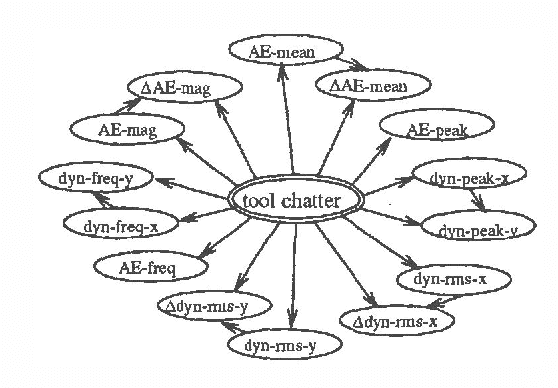Kim-Leng Poh
Directed Reduction Algorithms and Decomposable Graphs
Mar 27, 2013



Abstract:In recent years, there have been intense research efforts to develop efficient methods for probabilistic inference in probabilistic influence diagrams or belief networks. Many people have concluded that the best methods are those based on undirected graph structures, and that those methods are inherently superior to those based on node reduction operations on the influence diagram. We show here that these two approaches are essentially the same, since they are explicitly or implicity building and operating on the same underlying graphical structures. In this paper we examine those graphical structures and show how this insight can lead to an improved class of directed reduction methods.
Reasoning about the Value of Decision-Model Refinement: Methods and Application
Mar 06, 2013



Abstract:We investigate the value of extending the completeness of a decision model along different dimensions of refinement. Specifically, we analyze the expected value of quantitative, conceptual, and structural refinement of decision models. We illustrate the key dimensions of refinement with examples. The analyses of value of model refinement can be used to focus the attention of an analyst or an automated reasoning system on extensions of a decision model associated with the greatest expected value.
Probabilistic Conceptual Network: A Belief Representation Scheme for Utility-Based Categorization
Mar 06, 2013



Abstract:Probabilistic conceptual network is a knowledge representation scheme designed for reasoning about concepts and categorical abstractions in utility-based categorization. The scheme combines the formalisms of abstraction and inheritance hierarchies from artificial intelligence, and probabilistic networks from decision analysis. It provides a common framework for representing conceptual knowledge, hierarchical knowledge, and uncertainty. It facilitates dynamic construction of categorization decision models at varying levels of abstraction. The scheme is applied to an automated machining problem for reasoning about the state of the machine at varying levels of abstraction in support of actions for maintaining competitiveness of the plant.
A Graph-Theoretic Analysis of Information Value
Feb 13, 2013



Abstract:We derive qualitative relationships about the informational relevance of variables in graphical decision models based on a consideration of the topology of the models. Specifically, we identify dominance relations for the expected value of information on chance variables in terms of their position and relationships in influence diagrams. The qualitative relationships can be harnessed to generate nonnumerical procedures for ordering uncertain variables in a decision model by their informational relevance.
Time-Critical Dynamic Decision Making
Jan 23, 2013



Abstract:Recent interests in dynamic decision modeling have led to the development of several representation and inference methods. These methods however, have limited application under time critical conditions where a trade-off between model quality and computational tractability is essential. This paper presents an approach to time-critical dynamic decision modeling. A knowledge representation and modeling method called the time-critical dynamic influence diagram is proposed. The formalism has two forms. The condensed form is used for modeling and model abstraction, while the deployed form which can be converted from the condensed form is used for inference purposes. The proposed approach has the ability to represent space-temporal abstraction within the model. A knowledge-based meta-reasoning approach is proposed for the purpose of selecting the best abstracted model that provide the optimal trade-off between model quality and model tractability. An outline of the knowledge-based model construction algorithm is also provided.
 Add to Chrome
Add to Chrome Add to Firefox
Add to Firefox Add to Edge
Add to Edge